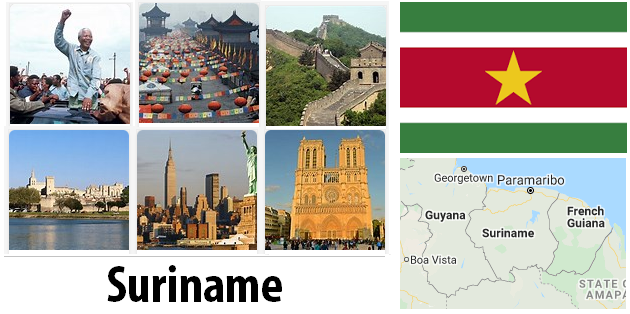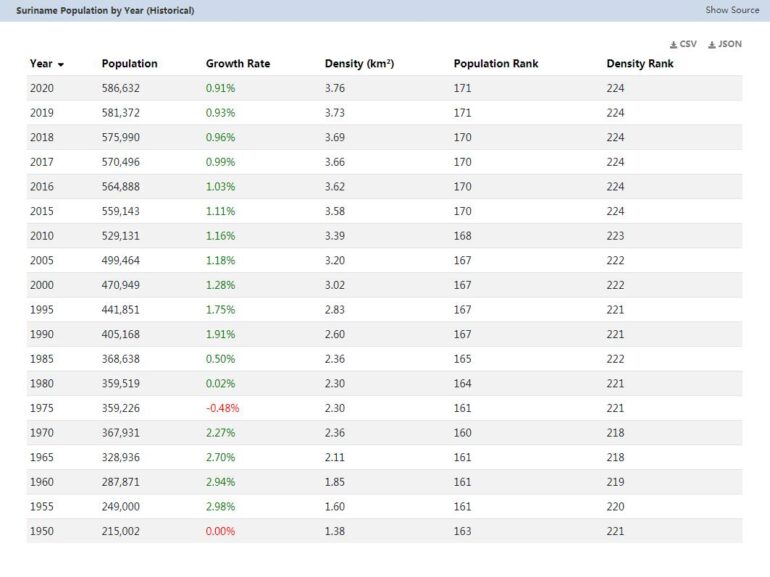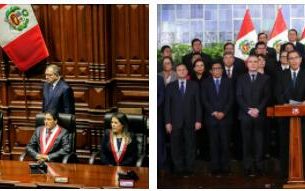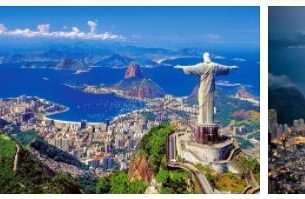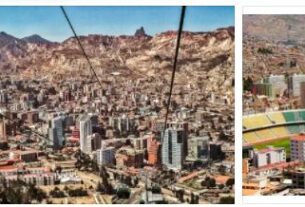In 1498, for the first time, an Italian observed from the deck of a ship the wild and forested coasts of new lands, which descended with mountain groups into the Atlantic ocean. It was thus an Italian who discovered the coast of Guyana in South America, in an expedition nominally commanded, however, by the Spaniard Halonso de Hojeda.
For a long time no one spoke of exploring the interior and the Spanish and Portuguese colonization continued elsewhere.
The name Guyana probably derives from the name of a miserable Indian village, called “Guyane”, which the first English, Dutch and French colonizers, landed there in the early 1600s, met on the coast.
The coastal strip was unhealthy and swampy, occupied by the marshy mouths of rivers. See Countryaah for population and country facts about Suriname.
Continuing inland, the colonists had to climb the hilly slopes of the great Guyana massif, developed throughout the territory, without ever reaching great heights.
Guyana which occupies the part of the South American continent closest, as the crow flies, to Europe or, more precisely, to the Iberian peninsula, was never conquered by the Spanish or the Portuguese.
After Vespucci Guyana was touched by Vicente Yanez Pinzon, already pilot of one of the caravels of Colombo, and by other Spaniards but, strangely, no one took care of that land. Perhaps it was its swamps from which mephitic vapors rose, perhaps the appearance of its forests, that discouraged explorers; the fact is that those first English, French, but above all Dutch, belonging to the very powerful Company of the West Indies, made their first entry into the area, and immediately divided the territory into three parts that were defined: British Guyana, Dutch Guyana or Suriname and French Guiana; on each they established their respective sovereignties, with a series of peaceful agreements.
In each area the first factories were founded with exclusively commercial purposes and colonization began with abundant use of black slaves imported from Africa.
In 1667 an expedition led by Abraham Grijnssen took over a large part of the territory by removing it from the British. These, however, after destroying the Dutch naval power, returned in possession of those lands which, then, had to return to Holland in accordance with the Treaty of Amiens of 1802.
But when the British defeated Napoleon, England managed to regain possession of that part of Guyana which formed the British part.
Colonization began immediately but Indians, Negroes and Creoles did not want to work on the plantations under the orders of the Dutch and retreated to the virgin forests, until then little known, thus creating the great problem of the workforce for the whites.
In 1867 the Dutch were forced to enroll, with a 5-year contract, Chinese and Indians from English India and from 1894 also the Javanese. Many, when the contracts expired, became settlers themselves and devoted themselves more to the cultivation of cocoa and sugar, and long fiber cotton capable of yielding two harvests per year.
Cattle breeding was developed with the production of dairy products.
The exploitation of gold and bauxite mines and also of forests for timber became intense.
Holland granted autonomy to Guyana (or Suriname) in 1950; only the Prime Minister was appointed to the Hague.
In 1954 this autonomy became complete (until 1975) and Suriname became part of the Netherlands.
